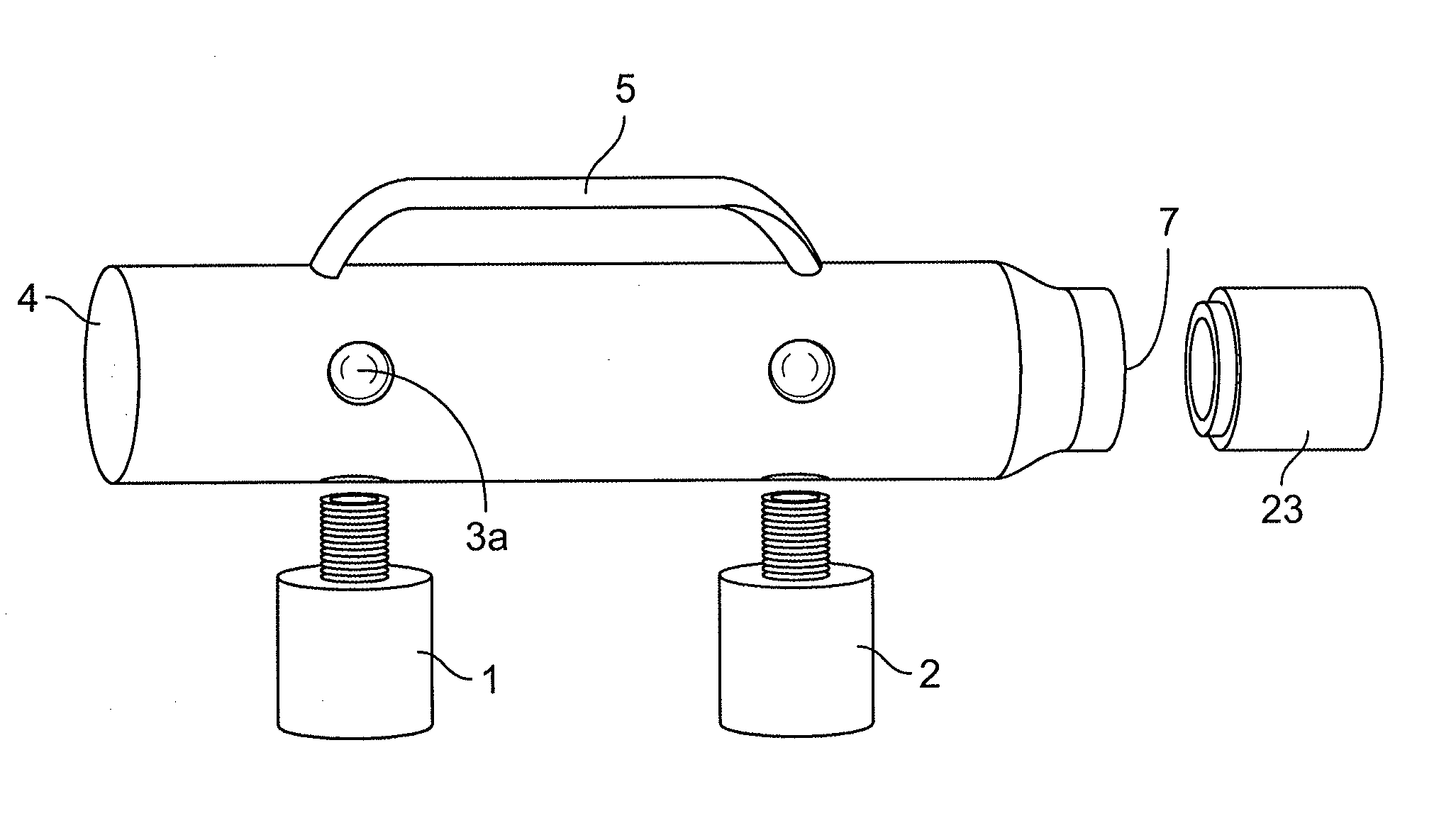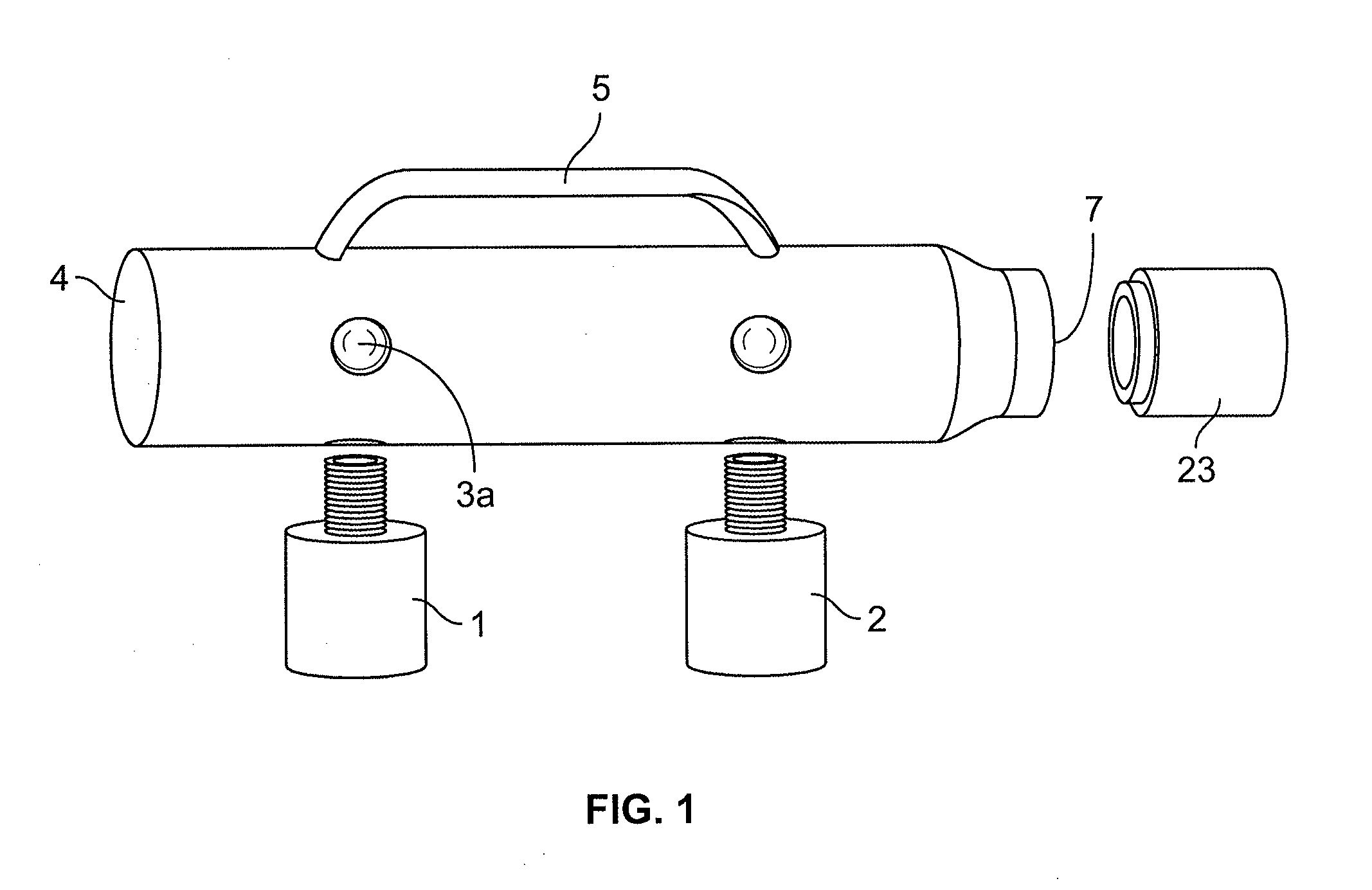Rescue inhaler
a technology of inhaler and inhaler, which is applied in the field of rescue inhalers, can solve the problems of reducing the oxygen supply of the inhaler, affecting the flow and pressure, and creating a poor length-tension relationship, so as to increase the oxygen supply, increase the work load of cardiopulmonary, and increase the safety
- Summary
- Abstract
- Description
- Claims
- Application Information
AI Technical Summary
Benefits of technology
Problems solved by technology
Method used
Image
Examples
example 1
[0205]% of He is 28% (0.280×0.178)+% of O2 is 23% (0.230×1.43)+% of N2 is 30% (0.300×1.25)+19% air (0.19×1.29 g / l)
He=0.049+O2=0.3289+N2=0.375+Air=0.245=d avg.=0.9979 g / l
example 2
[0206]% of He is 30% (0.300×0.178)+% of O2 is 25% (0.250×1.43)+% of N2 is 30% (0.300×1.25)+15% air (0.15×1.29)=d avg.
He=0.053+0.3575+0.375+0.193=d avg.=0.9875 g / l
example 3
[0207]% of He is 30% (0.30×0.178)+% of O2 is 40% (0.40×1.43)+% of N2 is 25% (0.25×1.25)+5% air (0.05×1.29)=d avg.
He=0.0534+O2=0.572+N2=0.3125+Air=0.0645=d avg.=1.108 g / l
PUM
 Login to View More
Login to View More Abstract
Description
Claims
Application Information
 Login to View More
Login to View More - R&D
- Intellectual Property
- Life Sciences
- Materials
- Tech Scout
- Unparalleled Data Quality
- Higher Quality Content
- 60% Fewer Hallucinations
Browse by: Latest US Patents, China's latest patents, Technical Efficacy Thesaurus, Application Domain, Technology Topic, Popular Technical Reports.
© 2025 PatSnap. All rights reserved.Legal|Privacy policy|Modern Slavery Act Transparency Statement|Sitemap|About US| Contact US: help@patsnap.com



